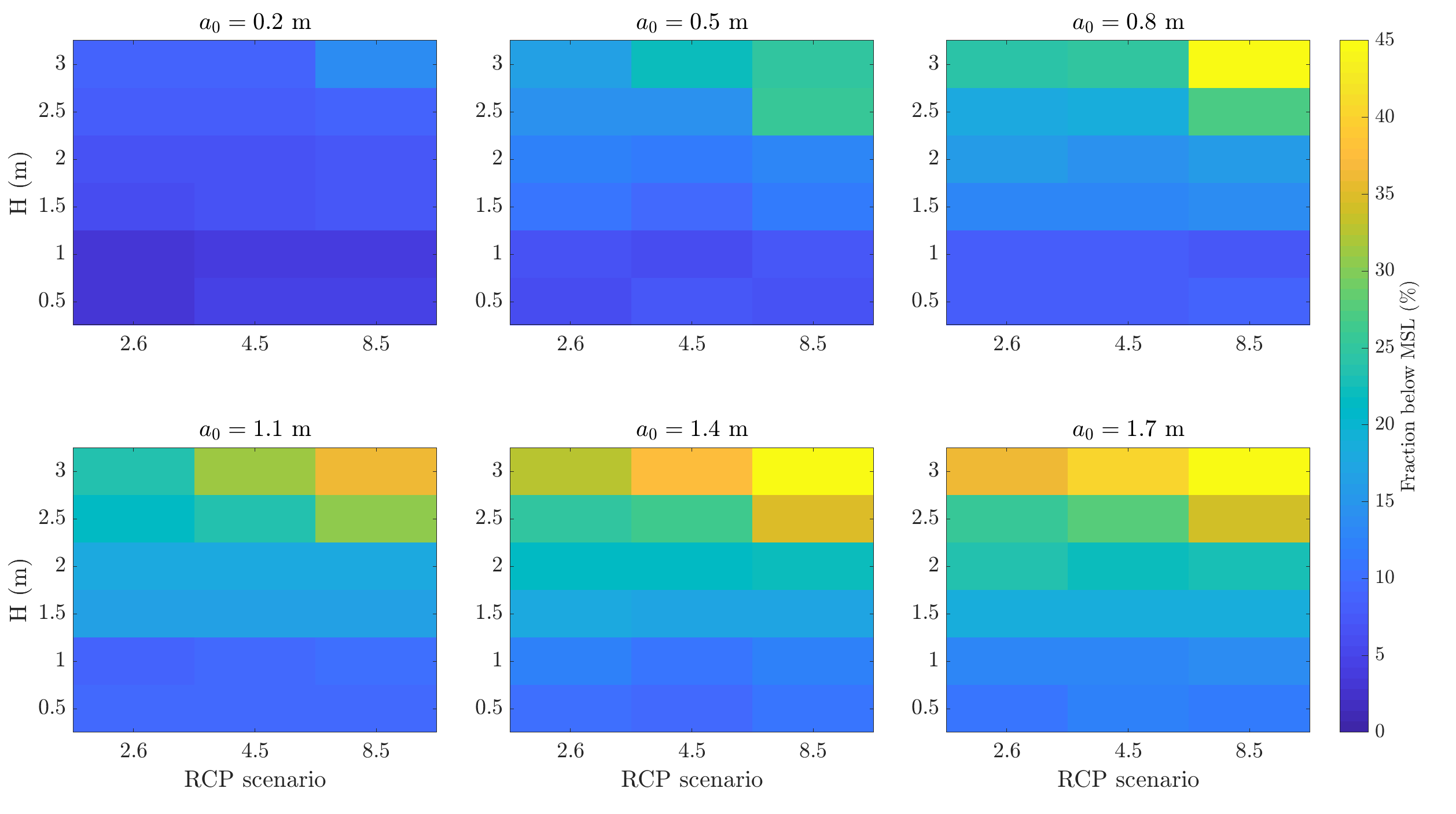L. Portos-Amill1*, J.H. Nienhuis2, H.E. de Swart1
1 Institute for Marine and Atmospheric Research, Utrecht University, NL
2 Department of Physical Geography, Utrecht University, NL
*corresponding author:
Introduction
Interrupted barrier coasts, which comprise 10% of the world's coasts, consist of low-lying islands interrupted by inlets. Understanding their spatio-temporal behaviour and evolution is of great importance from an ecologic and socioeconomic point of view. Under moderate rates of sea level rise, barrier islands can survive by migrating onshore. However, the increasing sea level rise (SLR) rates that are expected to take place during the 21st century and beyond may cause an increasing proportion of barrier island chains to be below sea level. The present study looks at barrier island drowning timescales and spatial scales under different SLR scenarios, between the years 2000 and 2300.
Methods
Simulations were performed using the BRIE model (Nienhuis et al., 2019), an idealised model including overwash as well as inlet and shoreface morphodynamics. Runs consisted of 2000 years for model spin-up with a constant SLR rate of 2 mm/yr, and 300 years for system evolution under a SLR defined by the different IPCC scenarios (RCP2.6, RCP4.5 and RCP8.5). For all scenarios we assessed the transformation of tide-driven inlets toward SLR-driven inlets, which together sum up to be a barrier fraction below sea level.
Results
Simulations performed under different SLR scenarios and different values of wave height and tidal amplitude highlight the vulnerability of these systems under extreme conditions (see Figure 1). Results also show that the relation between fraction of barrier island that was drowned and sea level depends on SLR scenario. Thus, barrier system evolution strongly depends on the rate of SLR and its time dependence, and not only on the sea level at a given time.
 Figure 1: Temporal mean (years 2000-2300) of alongshore fraction of the barrier that was drowned, for different values of tidal amplitude (a0), wave height (H) and RCP scenario.
Figure 1: Temporal mean (years 2000-2300) of alongshore fraction of the barrier that was drowned, for different values of tidal amplitude (a0), wave height (H) and RCP scenario.
References
Nienhuis, J.H., Lorenzo-Trueba, J. (2019), Geosci. Model Dev., 12, 4013-4030.
I. Surname1*, F.N. Another-Surname2 , Y. Next-Surname2
1 University Name, Country; 2 Organization Name, Country
* Corresponding author: mail.name@organization.org


